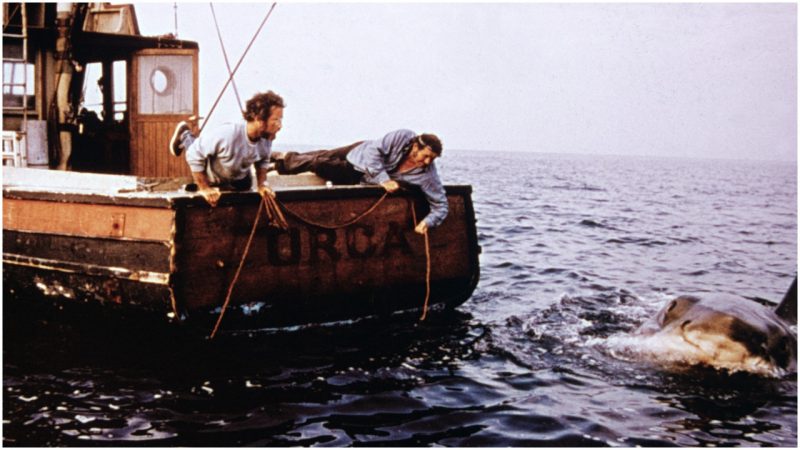Over a span of 14 days on the Jersey Shore in the summer of 1916, four young men were killed and one maimed by a shark. At the time, most people did not know that sharks attacked humans. The ensuing newspaper coverage of the tragic seaside deaths triggered a tsunami of mass hysteria.
Nearly 60 years later, director Steven Spielberg would set off another wave of seaside terror with his now iconic movie Jaws. His terrifying tale of the hunt for a killer shark was so successful that it set the template for the summer blockbuster that is still followed today.
The fictional movie, and novel it was adapted from, gave a nod to the historical facts that served as inspiration.
On July 1, 1916, a 25-year-old student from the University of Pennsylvania was playing in the surf with a dog at dusk in Beach Haven, New Jersey, when a shark tore into his leg. Bleeding profusely, Charles Vansant was pulled from the water and taken to a beachfront hotel, but his own physician father was unable to stanch the wound, and the young man died.
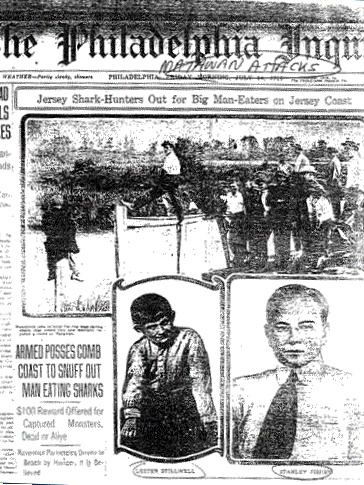
Five days later and 45 miles north, a 27-year-old bellhop was killed while swimming in the ocean near the town of Spring Lake. Rescuers reached him in a lifeboat, but both of his feet were severed, and like the earlier victim, he bled to death before reaching shore.
“SHARK KILLS BATHER OFF JERSEY BEACH: Bites Off Both Legs of a Youth,” blared the front page of the New York Times on July 7, 1916. “Women Are Panic-Stricken as Mutilated Body of Hotel Employee is Brought Ashore.”
Bathing at the beach was a relatively new pastime for Americans. At the time scientists didn’t even believe sharks attacked humans. One prominent ichthyologist declared an orca, or killer whale, had bitten the bellhop. Others suggested that the victim had succumbed to a school of snapping turtles.
The New York Times had previously dismissed the possibility that sharks were killers, writing in a 1915 op-ed “that sharks can properly be called dangerous, in this part of the world, is apparently untrue.”
The next attacks happened farther up the coast, in New Jersey’s Matawan Creek, which at the time was an inlet deep enough for tugboats to navigate. There a young boy was bitten while playing in the water and a young man who tried to rescue the boy was likewise mauled to death. Another bitten boy survived.
“Shark Kills 2 Bathers, Maims 1,” as the New York Times reported on July 13, 1916. “BOY TORN FROM HIP TO KNEE. Another Dragged Down by Monster Fish.”
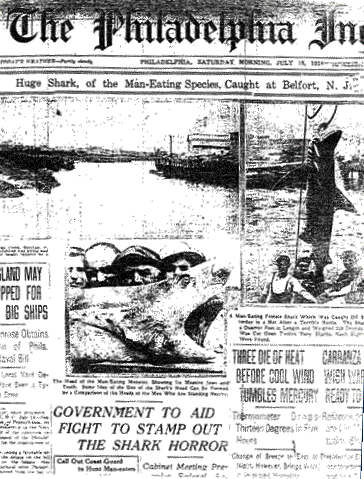
President Woodrow Wilson called a Cabinet meeting to ask the Coast Guard to determine whether there were “actually large numbers of sharks menacing the Jersey Shore,” according to the Times.
“Hysteria spread, afflicting the lowly and the mighty, as a single shark prevented people from entering the water along more than a thousand miles of the East Coast, from New England to Florida,” Michael Capuzzo wrote in his definitive account, Close to Shore: A True Story of Terror in an Age of Innocence.
Vigilantes in armed motor boats patrolled the beach and bay; hundreds of sharks were killed. Eventually, an eight-foot juvenile great white shark was pulled from the New Jersey waters. Its stomach contained human remains. The next day, photos of the man-eating menace appeared on front pages across the country.
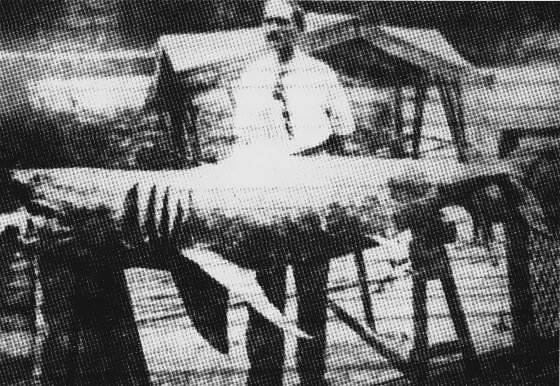
The movie Jaws, based on the 1974 Peter Benchley bestseller, captured the era’s hysteria, though set in then present-day 1970s. When a shark attacks a skinny-dipping beauty in a coastal resort town—to the iconic and ominous da-dum da-dum da-dum soundtrack—the local police chief along with marine biologist and a local shark hunter track down the killer.
“It happened before,” Roy Scheider said as police chief Martin Brody in Jaws in a not-quite-accurate nod to history. “The Jersey beach, 1916. There were five people killed.”
Making the movie was a bit of a terror for Steven Spielberg, who began production without a finished script, went 100 days over schedule and $4 million over budget, and whose one-ton mechanical shark often refused to work. The angry Spielberg bitterly called the fake swimmer the work of the “special defects department.”
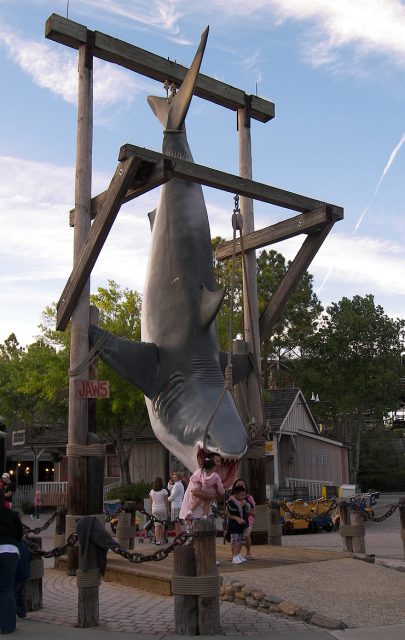
When Spielberg attended a star-studded party on Martha’s Vineyard, where he filmed Jaws, an actress confronted him saying she’d heard his movie was a mess and he’d never work again.
Jaws was released in the summer of 1975, to capitalize on its beach theme. It took in $14 million in its first week ($63 million adjusted for inflation) and a record-breaking $100 million in 59 days, the biggest hit of all time.
Two years later, Star Wars, also released in the summer, would surpass Jaws, cementing the model for hugely promoted, big-budget blockbusters.
Not everyone was pleased. Beach attendance plunged in 1975, shark sightings skyrocketed, trophy hunters piled into boats to participate in shark-hunting tournaments, and conservationists bemoaned the public’s condemnation of the creature.
The last fatal shark attack in New Jersey occurred in 1926.
